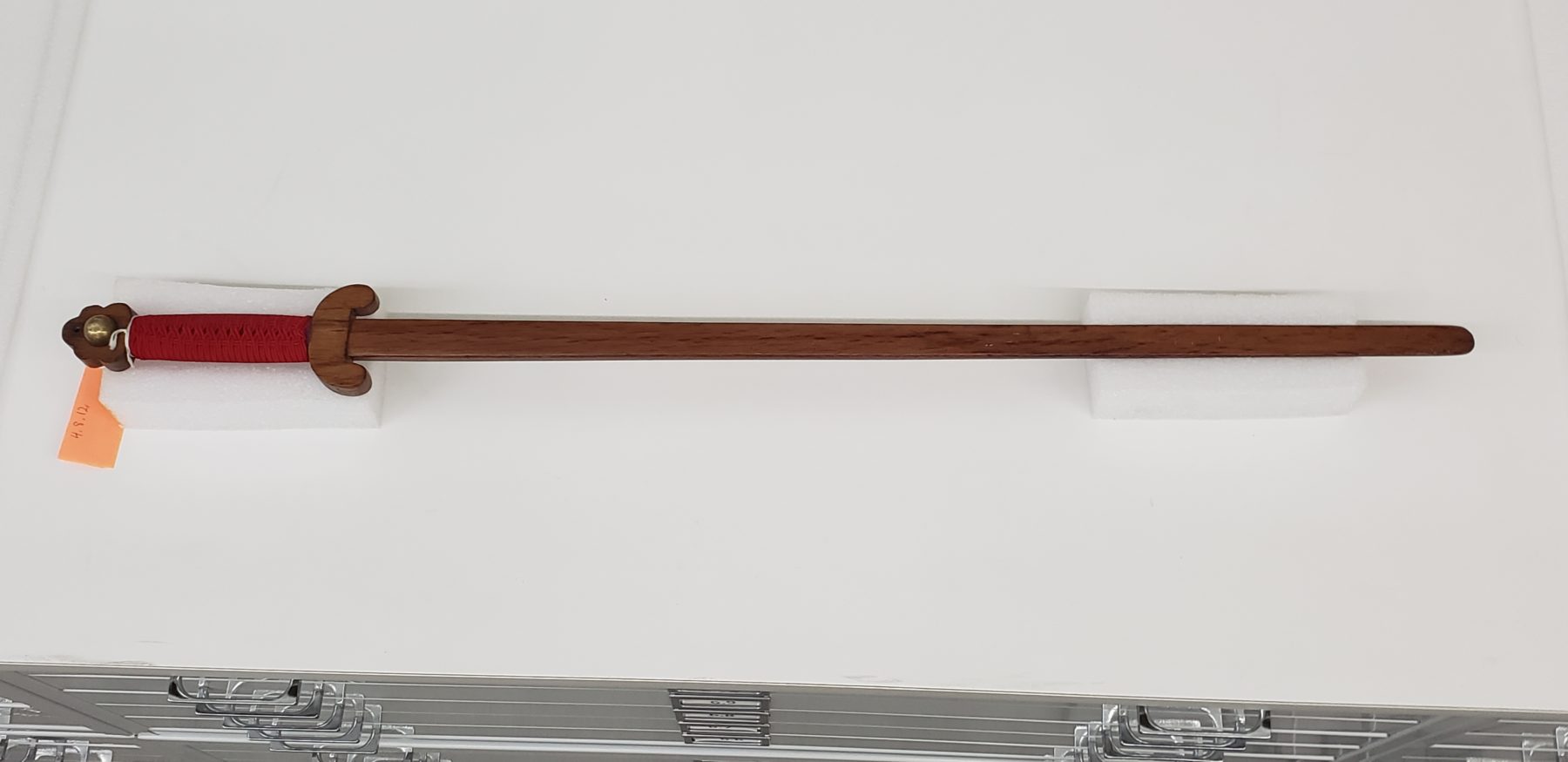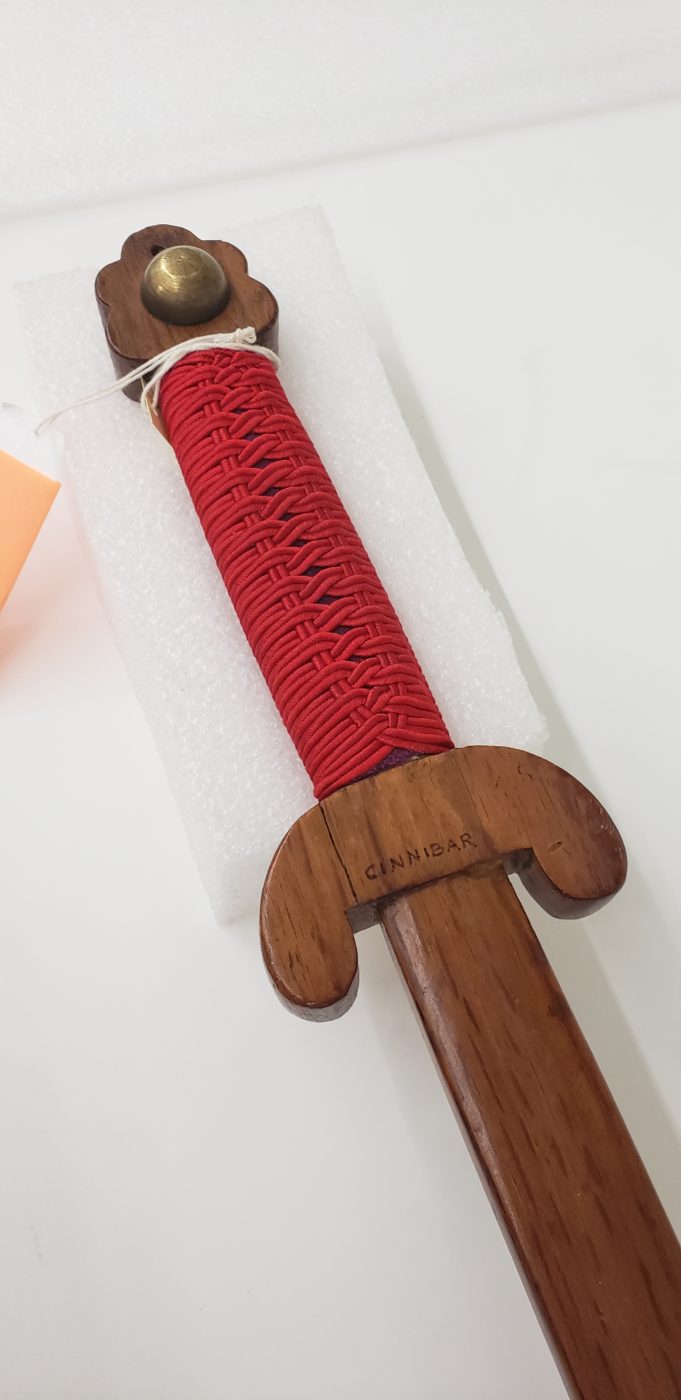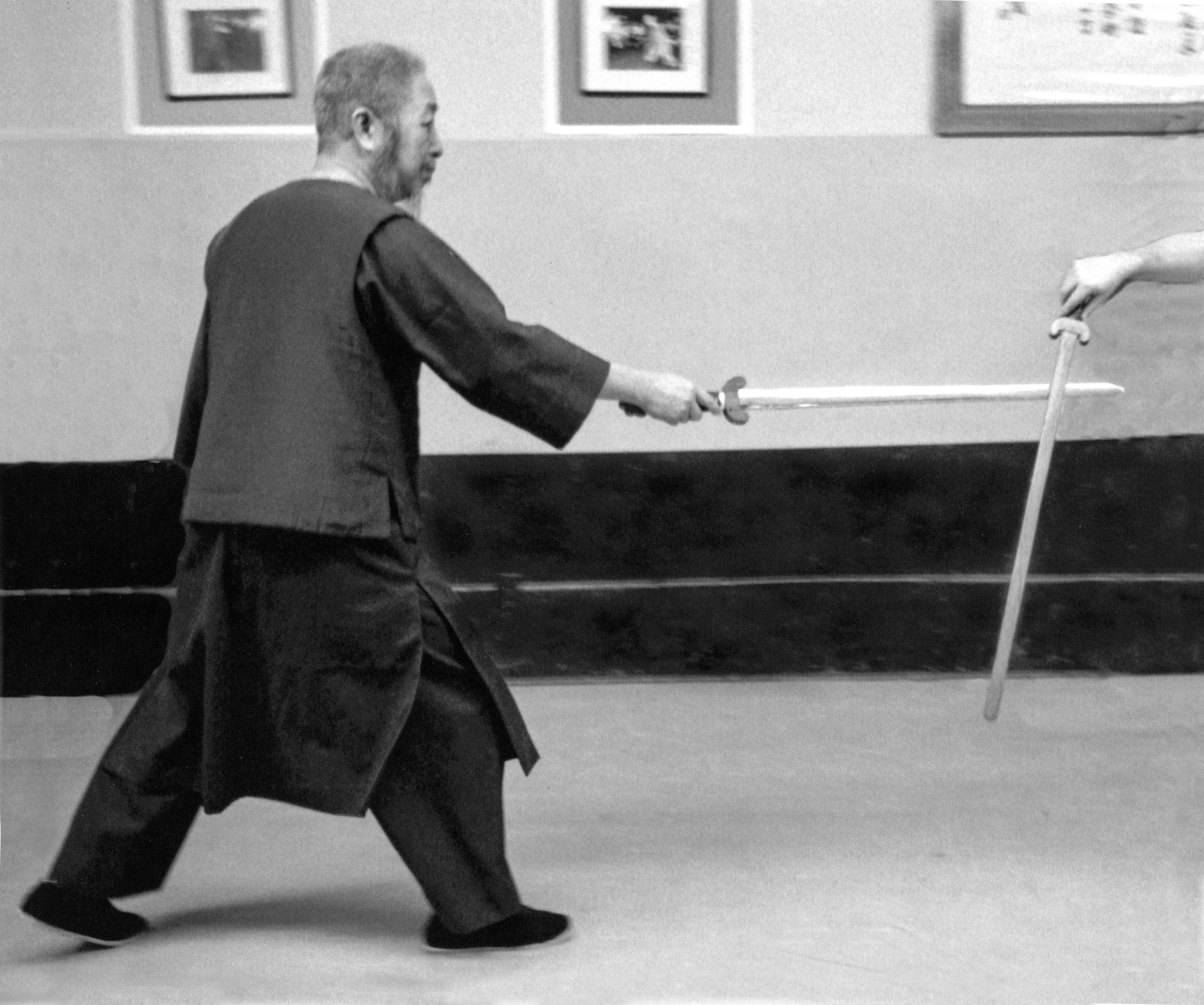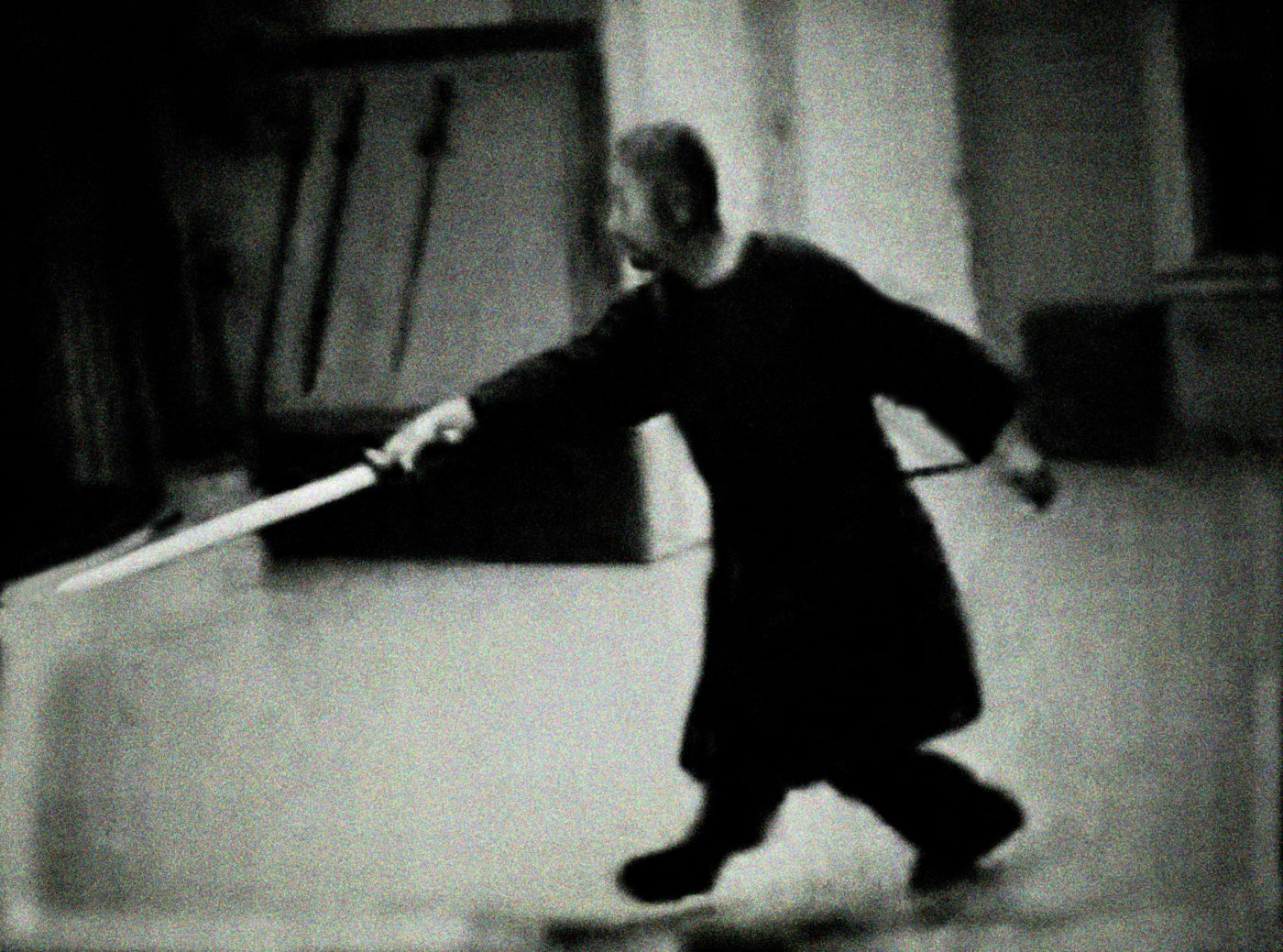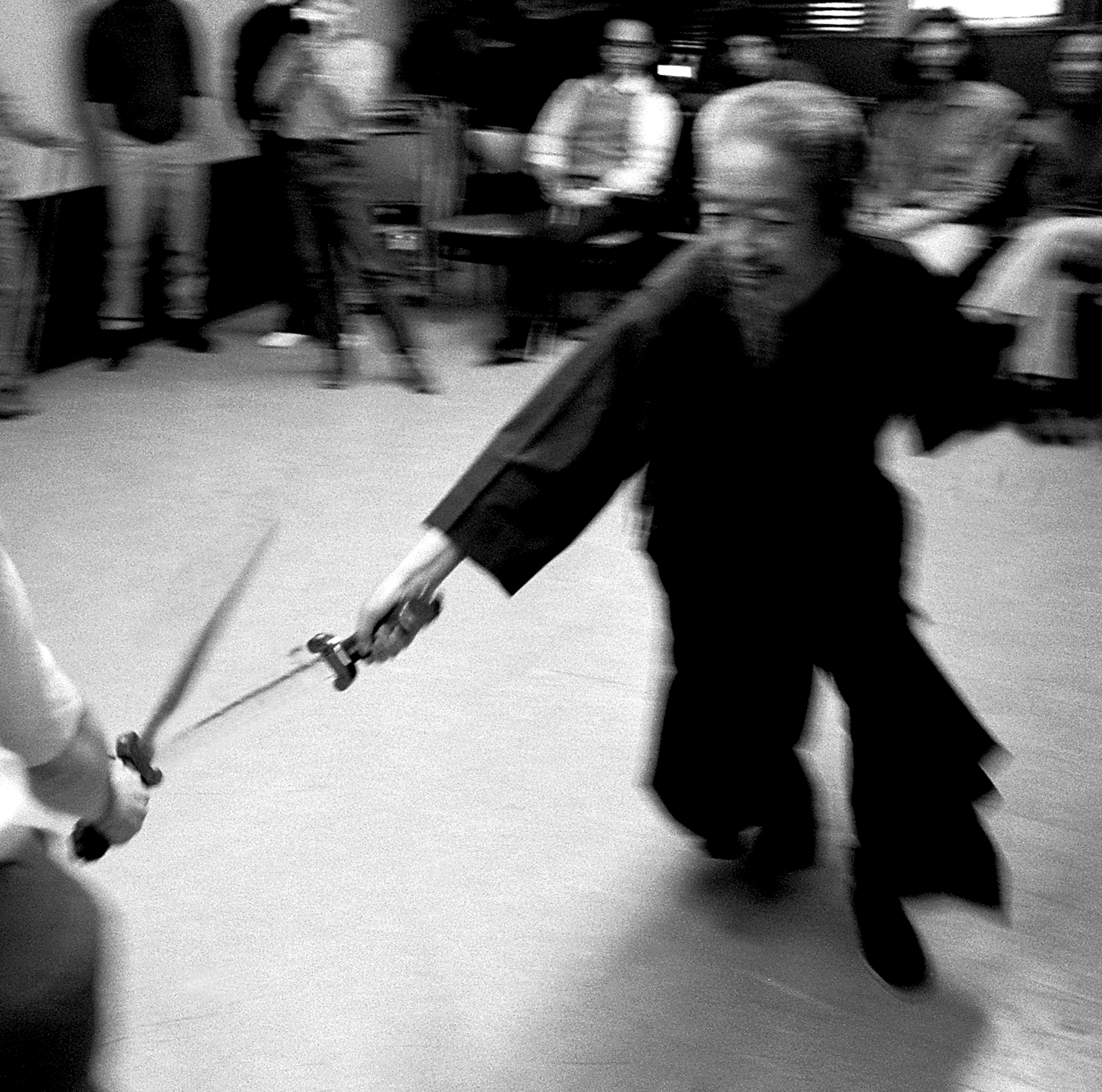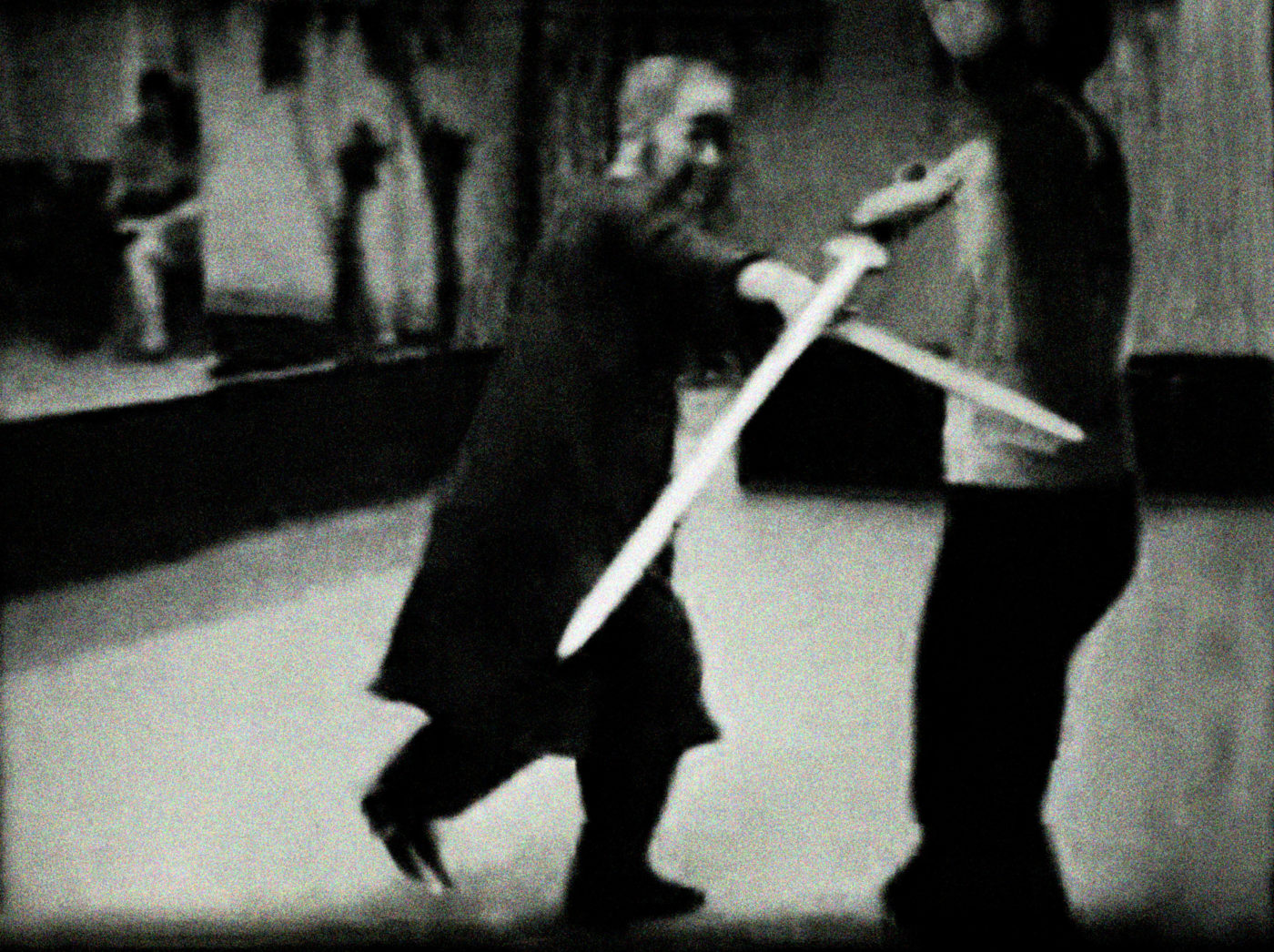A T’ai Chi sword from Cheng Man-Ching’s Shr Jung School has been accessioned into our MOCA Cheng Man-Ching Collections recently. Measuring roughly 41.5” long with a 3.375” wide hilt and a center of balance close to 4.5” from the hilt, it is a sizeable sword designed for use with T’ai Chi sword forms. Additional physical features include a pommel inlaid with a round polished metal, possibly for weight, a tapered blade that thins out towards the tip, and a freshly wrapped handle. Although it is a wooden sword, it handles fairly closely to a real Jian (a type of Chinese sword), with the expectation that it should allow for an easier transition into training with the real weapon once a practitioner is ready.
Cheng Man-Ching believed that the use of a sword in T’ai Chi is a necessary complement to the forms and push hands practices. In the classroom setting, Cheng Man-Ching would demonstrate his sword forms and have students replicate his movements behind him. Cheng Man-Ching had a total of 54 sword forms, each with its unique name. These forms would become the foundation for developing sword handling techniques and these sessions would be supplemented with sparring/fencing practice. The basic principles of fencing in Cheng Man-Ching’s T’ai Chi class involve two students “sticking” the blades together. The joined blades are rotated as the two blade wielders try to find deficiencies in form or movement to exploit and “cut” the opponent. Aluminum foil is often adhered to the wooden swords and tears and scuffs on the foil would be an indicator of the user being too forceful during sparring and would need to adjust to better follow the flow of the opponent’s blade. Students of Cheng Man-Ching such as Ken Van Sickle, who generously donated this sword to us, continue to spread the practice of T’ai Chi Sword form and fencing.
